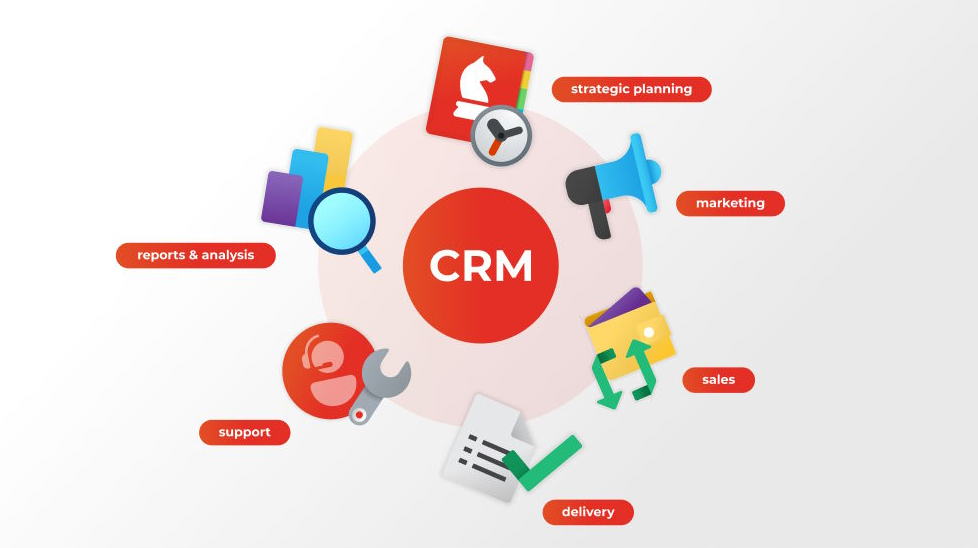Key Takeaways:
- Understand the essential components of a successful CRM implementation.
- Explore practical steps to customize CRM systems to meet business needs.
- Learn about the common pitfalls and how to avoid them to achieve optimal CRM efficiency.
A CRM system can significantly improve business processes and customer relationships. However, success depends on careful planning, alignment with organizational goals, customization, and user adoption. A well-implemented CRM can centralize customer data, automate tasks, and enhance team collaboration. Strategic integration and employee training can maximize CRM value, improving customer satisfaction and operational efficiency. A CRM system can drive sustainable growth and maintain a competitive edge.
CRM systems are essential for managing interactions and nurturing customer relationships in modern businesses. Successful implementation can significantly impact productivity, customer satisfaction, and efficiency. The benefits of CRM implementation are numerous. As a Salesforce certified partner, firms can leverage powerful tools supporting expansive business growth.
CRM systems offer many functions, from automating tedious tasks to providing in-depth insights into customer behaviors. These systems can transform operational efficiency by streamlining processes, improving team communication, and fostering a customer-centric culture. Consequently, understanding how these systems align with a company’s strategic objectives is vital for successful implementation. When the CRM’s capabilities are aligned with the broader business goals, it maximizes its potential utility and enhances customer relations.
Identifying Business Needs
The foundation of any successful CRM implementation begins with a thorough evaluation of the company’s business needs and objectives. Aligning the CRM system with the company’s needs cannot be overstated. Before diving into the selection process, businesses must pinpoint what they aim to achieve with the CRM and identify how it can support their existing processes. This crucial step ensures that the chosen CRM functionalities cater to the enterprise’s goals rather than basing decisions solely on industry trends or popularity.
This process involves an all-encompassing assessment of existing business processes, identifying gaps, and establishing measurable objectives. It requires businesses to comprehensively understand their current infrastructure and how a CRM system can fill operational gaps. By clearly defining these elements, a company uniquely tailors the CRM solution to benefit its overarching goals.
Tailoring the CRM System
One of CRM systems’ fundamental advantages is their inherent flexibility and adaptability to specific business needs. Tailoring a CRM system involves customizing it to fit seamlessly into the company’s workflows. Not only does this increase efficiency, but it also drives user engagement, as employees find the system more intuitive and related to their daily tasks.
Customization of a CRM system can involve adjusting dashboards, incorporating specific tools, or developing custom modules to address business-specific challenges. Aligning CRM with a company’s unique processes makes it an integral part of the operational fabric, enhancing its utility and yielding significant returns on investment.
Training and Support
Transitioning to a new CRM system can be daunting for employees. Therefore, comprehensive training and ongoing support are essential to ensure seamless adoption. Training programs should be designed to familiarize users with the new system and empower them to fully use its features. Preparing teams through online resources, in-person workshops, and continuous training sessions can significantly enhance user proficiency.
Moreover, fostering a feedback-rich environment where employees can voice their grievances and suggest improvements can lead to invaluable insights. This ongoing support system not only sweetens the onboarding process but ensures that the system continues to meet the ever-evolving needs of the user base. Businesses must recognize that implementing a CRM is not a one-time event but an iterative process that evolves through continuous learning and adaptation.
Monitoring and Feedback
After a CRM system goes live, the monitoring phase begins. This phase involves reviewing the effectiveness of the CRM system in meeting its intended goals and objectives. Businesses can determine whether their CRM delivers the expected benefits through regular assessments and performance tracking. Monitoring can be executed using key performance indicators that align with business objectives, ranging from user adoption rates to customer satisfaction levels.
Feedback, meanwhile, is about creating a two-way communication street where users can regularly share their experiences and suggest improvements. These insights facilitate the refinement of the CRM system, ensuring it evolves alongside business development.
Common Challenges and Solutions
CRM implementations face challenges like user resistance, data migration issues, and insufficient training, emphasizing the need for strategic planning and proactive management throughout the process.
These challenges can be mitigated by anticipating potential obstacles and establishing robust communication channels. For instance, involving stakeholders from various departments during the selection and customization phases enlarges engagement and ownership, reducing resistance. Similarly, ensuring high data integrity during migration phases prevents disruptions and promotes smooth transitions. Addressing these common challenges with strategic planning and proactive adjustments can make all the difference between a successful deployment and an underwhelming one.
Future Trends in CRM Technology
CRM technology is constantly evolving due to technological advancements and market demands. AI and analytics tools are redefining CRM capabilities, offering businesses new ways to engage with customers. AI integration allows companies to extract deeper insights, personalize experiences, and predict future needs.
CRM innovation trends enhance customization and ease of use, reflecting increasing consumer demands for real-time engagement. Staying updated on these advancements can provide a competitive edge, ensuring businesses remain agile and responsive to market dynamics and aligning their strategies with continuous change and growth.

